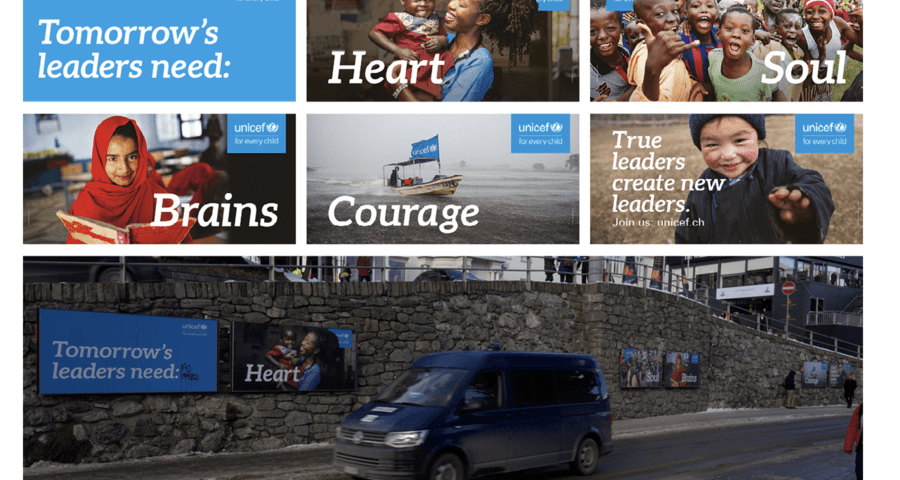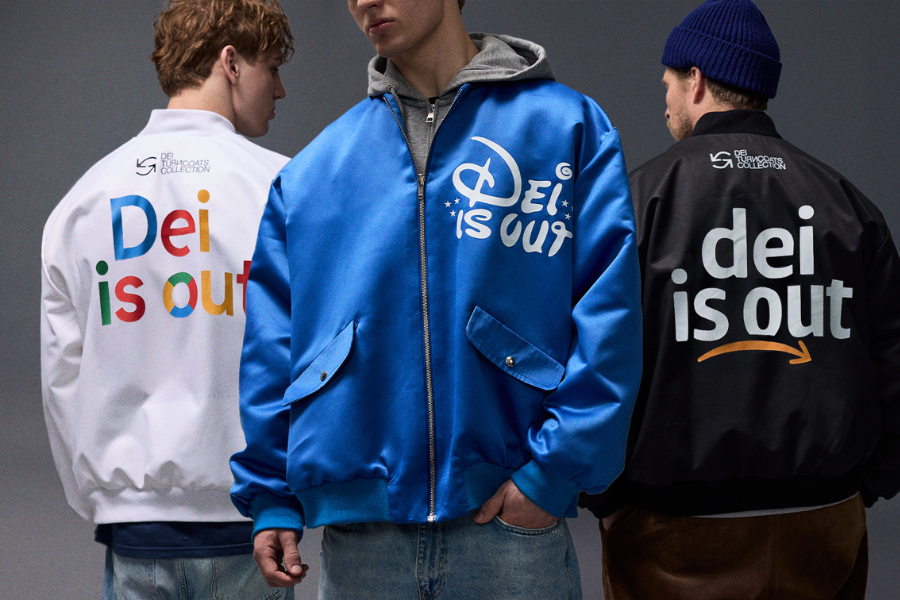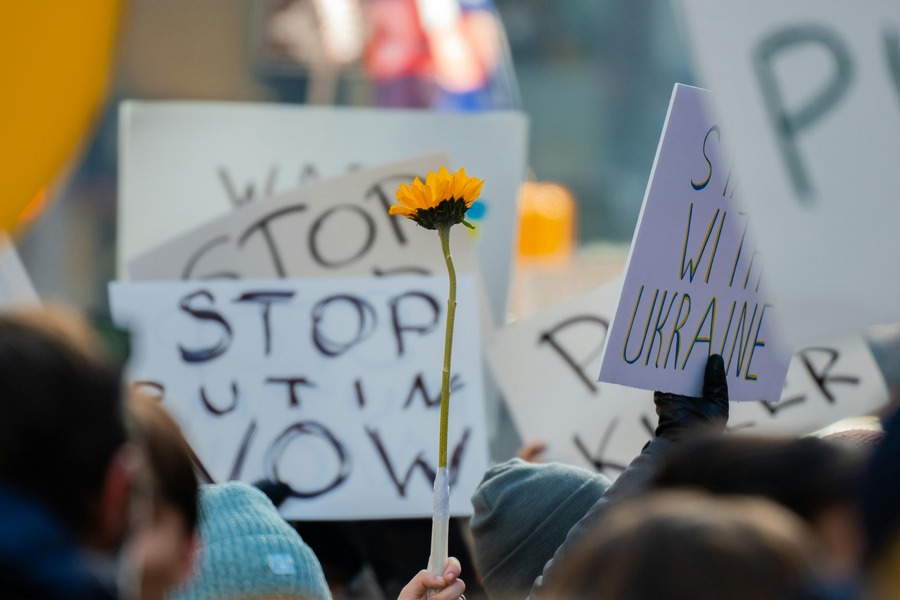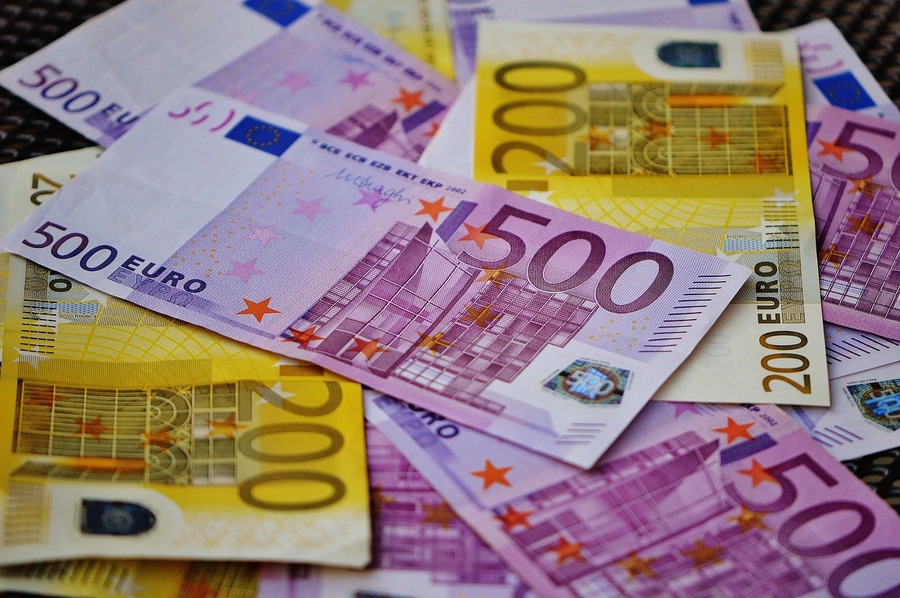
EU anti-money laundering & counter-terrorism financing policy & its impact on civil society
June 28, 2023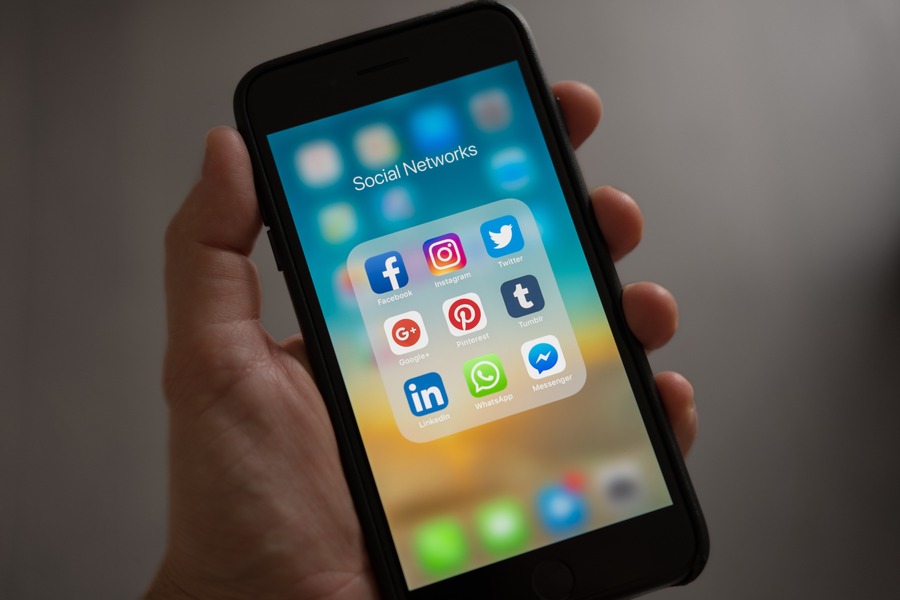
Ipek Aykut: Insights into social media use among French associations & foundations
June 28, 2023A standout brand image makes all the difference when it comes to boosting awareness and fundraising. Felix Freese, senior brand and communication manager at UNICEF Switzerland and Liechtenstein, explains how his team has used advertising to build the nonprofit’s brand and the difference this has made.
As part of my last job in the advertising industry, I launched one of the most creatively awarded campaigns in Switzerland: the 50th anniversary of the McDonald’s Big Mac. Over my 20+ years in advertising, working with global agency networks such as BBDO, FCB, Publicis, Saatchi&Saatchi and TBWA, as well as clients like BMW, MINI, Zurich Insurance, Swiss Int. Air Lines and Apple, I learned that creativity can drive real impact. Yet too often, creativity is seen as an end itself. While this approach might work for a majority of advertisers, fundraisers simply cannot hide behind flashy images.
After four years at UNICEF, I now understand how brand advertisement and fundraising can create synergies. Each A/B test helps to improve your knowledge base and creates food for creative thought. Fundraising coupled with brand advertisement creates results that fundraising by itself simply cannot.
Before I started my position as head of brand at UNICEF Switzerland and Liechtenstein, the organisation was going through a phase of transition. My first task was to adapt UNICEF’s international Corporate Identity Corporate Design (CICD) guidelines for our local purposes. Slowly but surely, I managed to untangle a clutter of old design elements, variations and interpretations and give them one voice. Today, my team serves as a boutique inhouse agency managing our corporate identity, while simultaneously building the brand image. We’re at once the guidelines-police as well as a communications think tank, clearing every communication asset both visually and textually. Operating on a limited media budget, we are aware that a fine-tuned brand identity boosts our presence, as much as corporate wording ensures better understanding.
But we also know that we can’t do everything by ourselves. This is why we work with a network of freelancers and specialised agencies – for programmatic ads for example. Collaborating with others helps us to stay flexible and implement our campaigns as fast as possible.
Market research confirms the success of our approach. Unprompted brand awareness is rising steadily, despite our media budget being slashed in half. UNICEF is now better known in Switzerland and Liechtenstein than it has ever been in the past ten years.
My learnings:
Show strength. All employees need to display strong brand leadership and brand understanding. Our CICD is available on an online-platform, always up to date for everyone. To stress the importance of communicating in a single voice among employees, we regularly hold micro-learning sessions that last no longer than 15 minutes.
Position yourself. There is a reason why brands like Nike have been successful for decades. The slogan “Just do it” connects the company with people who identify with the message. For UNICEF Switzerland and Liechtenstein, our key message is “Never give up”. Over the past 75 years, we’ve been working relentlessly to advance the rights of children – even in the most remote regions in the world, in more than 190 countries. We transmit our key message via each and every communication asset we create, sometimes soft and nuanced, sometimes obvious and direct. “Never give up” is a slogan everyone can easily remember, distinguishing UNICEF from its competition. But most importantly: UNICEF keeps corroborating the slogan through its work – each and every day.
Communicate at eye level. Usually, we contact our audience to ask for something, be it money, time or an action. It’s a difficult position to be in. This is why we regularly launch image campaigns. They don’t need to result in donations, but to create a good and positive feeling. Image campaigns can be pushed by paid and earned media, or through a PR stunt. If you invest money in media, consistency is key. An advertising campaign can take up to three years to take root in people’s minds.
Be fast. In case of a natural disaster or conflict we have to act as fast as possible. In regard to communications, we have to be faster than our competition. Production has to be as smooth and simple as possible. This is why we have created container modules we just need to fill up with new content. For any new emergency campaign, we only need half a day to create a TV ad. We are able to release banner-sets in one day in Switzerland’s three official languages. Speed and routine give you the freedom to try out new communication strategies and channels.
Show heart. UNICEF is an evidence-based organisation. We can provide first-hand data and expertise about almost every situation and country around the world. But we also know that gut beats head. Facts lead to comparisons, and there is always a better competitor out there. This is why we emphasise real human-interest stories and emotional pictures.
Some examples: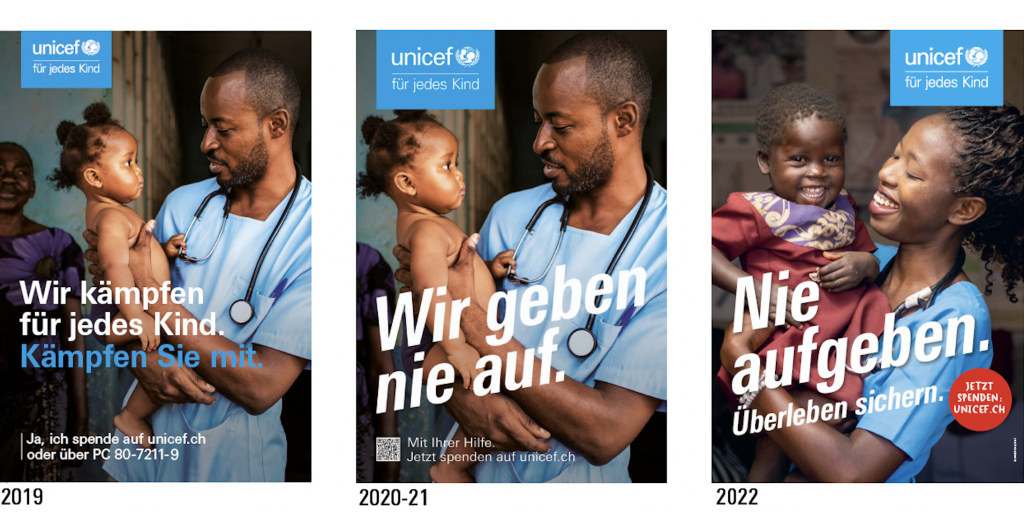
Making sure that a campaign sticks with a certain target group requires stamina. This is why we have kept altering our key visual in little steps.
In 2021, we created our own TVC for the first time in years. Music is a big factor for success. We chose the song “Don’t stop me now” by Queen.
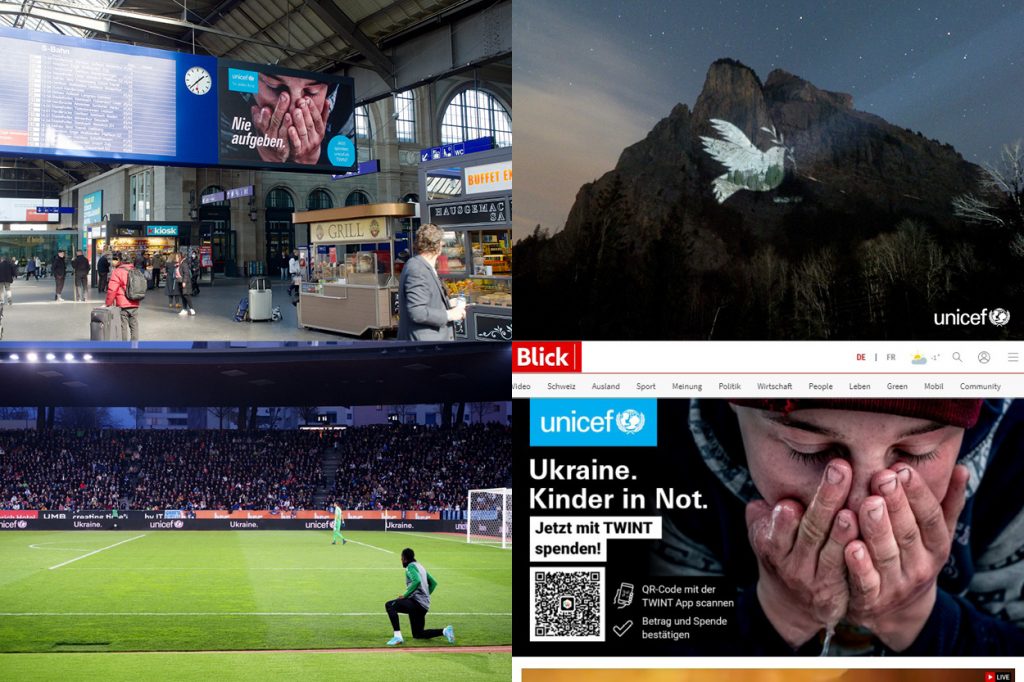
A PR stunt can improve brand awareness. As part of our fundraising campaign around the war in Ukraine, we projected a peace dove on a famous Swiss mountain – the largest-ever projection of its kind. It was a message of peace, from the heart of Europe to the world. A lot of bureaucracy was involved, the costs were less than a few hundred Swiss Francs, but the reach was enormous. Even on an international level.
Can brand advertising support fundraising?
My experience shows that a positive image has an immediate effect on fundraising. For example, our online donations have increased sixfold in the past four years. Our income from mailings that are supported through advertising campaigns is rising.
How much creativity is needed in fundraising?
The challenge is to find the right balance between consistency and curiosity. Consistency leads to an increase in brand awareness and trust, but you risk to lose excitement. Being surprising creates a tingle, but too much of it creates the opposite. Being creative also means developing new fundraising channels. For example, we have multiplied the number of donations via the TWINT finance app, launched online banners with QR codes that have proven to generate donations and are now testing ads with QR codes that appear during breaks on Replay TV.
About Felix Freese
Felix Tatsumasa Freese is senior brand and communication manager at UNICEF Switzerland and Liechtenstein, a role he has held since 2019. Prior to that he was Copywriter for Spinas Civil Voices, a fundraising agency working solely for nonprofits. He came to that role following 17 years as copywriter and then creative director at advertising agencies like BBDO, FCB, Publicis, Saatchi & Saatchi and TBWA / Media Arts lab, working for clients including BMW, MINI, Nivea, Zurich Insurance, Swiss International Airlines, McDonald’s and Apple. He can be found on LinkedIn.
